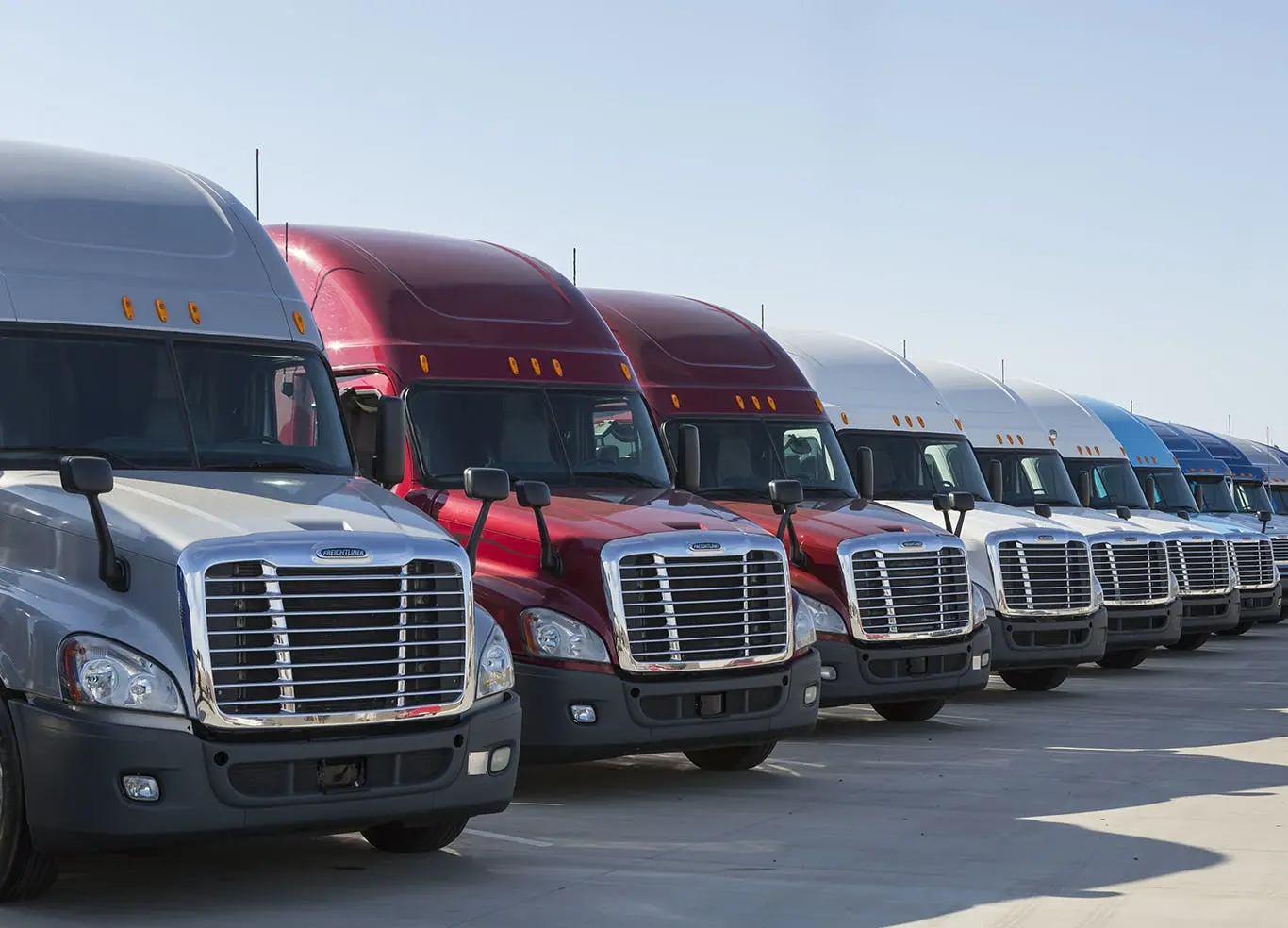

What is the Difference Between Regional, Local, and OTR Trucking?
There are several distinctions between over-the-road (OTR), regional (Regional), and local (Local) truck driving, but there are also some parallels. A CDL truck driver is often expected to assist with loading and unloading freight, as is the case with the majority of truck driving positions. Drivers should be prepared for manual work but may sometimes get drop-and-hook or no-touch runs. Despite this, physical effort is to be anticipated. In addition, according to the laws of the DOT, all truck drivers, regardless of the sort of truck driving they conduct, are allowed to be on duty for a maximum of 70 hours every eight days.
-
What is OTR in trucking?
- OTR Advantages
- OTR Disadvantages
-
What does regional truck driving mean?
- Pros of Regional Truck Driving
- Cons of Regional Truck Driving
-
What is local truck driving?
- Advantages of Local Driving
- Disadvantages to Local Driving
-
What is a Dedicated Route?
- Pros of a dedicated route
- Cons of a dedicated route

What is OTR in trucking?
What is the meaning of OTR trucks? It is an abbreviation for “over the road,” which describes truck drivers who transport freight over extensive distances and spend three to four weeks at a time away from home. OTR truck drivers are required to travel across the whole of the United States and Canada. OTR truck drivers are responsible for transporting a wide variety of goods, including large freight, machinery, building materials, and other forms of equipment.
OTR Advantages
- Higher Pay: Over-the-road truck drivers often make more money than their counterparts who drive locally. The annual salary for an OTR driver is typically about $62,000. However, it may take some time to get up to that level of earnings.
- Seeing the Country: This experience will allow you to go to parts of the country that you would not have been able to see otherwise.
- Job Security: Over-the-road truckers will always be required since companies like Amazon send more than five billion products in a single year.
OTR Disadvantages
- Away From Home: Truck drivers who travel long distances may be gone from home for many days or even weeks at a time. Making it fit with your other commitments and duties requires careful preparation and adjustment. For some people, the amount of time spent away is too much, particularly those who have a spouse and/or children.
- No Set Schedule: Laws dictating the maximum amount of hours spent behind the wheel that may be accrued in a given time frame apply to OTR truck drivers. Because of this, many trucking jobs begin beyond the allotted time of necessary rest, which means that your schedule could be different from one week to the next.
What does regional truck driving mean?
The region of the nation across which a truck driver transports products and resources is referred to as “regional trucking.” It is often divided into parts such as the Northeast and the Midwest and is typically contained within a radius of one thousand miles. Both over-the-road (OTR) and regional truck drivers follow a schedule that is essentially the same. After being on the road for a certain period of time, drivers return to their homes for a predetermined amount of time, which is determined by the guidelines given out by their employers. The fact that regional truck driver days often fall on weekends is one of the primary reasons why people choose this kind of route over OTR.
Pros of Regional Truck Driving
- Go Home Weekly: Regional drivers travel home once a week, which puts them in a happy medium between local drivers, who go home every night, and over-the-road drivers, who may only go home once every couple of weeks.
- Enjoy Being Close to Home: Driving locally has a number of advantages, including the fact that you get to go home once a week and the fact that if anything were to occur in the midst of the week, you would not be too far from home.
- Receive Bonus Options: It’s possible that you’ll have access to perks that other drivers won’t. Again, this all relies on the firm that you work for and the method that they use to pay their employees.
Cons of Regional Truck Driving
- There Isn’t Much Variety: Every day you’ll be traveling through the same area, passing familiar landmarks. For some drivers, it might seem repetitive and uninteresting.
- You May Have to Unload A Lot: Regional driving often involves many fewer deliveries than local driving. You often load and unload multiple times every day as a local driver. As a regional driver, your hauls are often shorter, so you may only unload and reload once a day.
- You’ll Probably Earn Less than OTR Drivers: Due to their lower mileage, regional drivers often earn less than OTR drivers. This is particularly true if you are waiting at a shipper or receiver for an extended period of time without being paid.
What is local truck driving?
Trucking locally means that the driver may be at home with their family every night, which is a significant perk for those who have a family. The routes are local, and the normal work day lasts between 8 and 10 hours and covers a radius of less than 200 miles. Due to the nature of the profession, local trucking might be more challenging than over-the-road (OTR) trucking or regional trucking. Because you will need to be able to navigate smaller roads on a regular basis rather than the highway, as well as, backing into tight loading docks multiple times a day, many local truck driving companies require that applicants have at least one year of CDL driving experience. If you are interested in the local trucking, you can find more information here.
Advantages of Local Driving
- Home Every Night: You get to spend every night with your family after a long day on the road because you get to park your rig and go home. Individuals with families, as well as those who are unable or unable to spend time away from home, are ideal candidates for local trucking jobs.
- Set Routine: Your path will almost always be the same from week to week. This ensures that your daily routine and workplace will remain consistent. Because you will be a regular customer at the businesses along your route, you will have the opportunity to develop cordial relationships with their staff.
Disadvantages to Local Driving
- Lower Pay: OTR drivers often bring in much more money than local truckers. Although a local truck driver may expect to make $45,000 per year on average, it will take some time before they reach that level of pay.
- Harder to Find a Job: Local truck driver opportunities are far more difficult to come by compared to over-the-road employment opportunities. As a result, you may first need to put in some time doing some over-the-road driving before you can secure a local contract.
What is a Dedicated Route?
When a trucking firm frequently provides service to the same company or area, this is known as a dedicated route. The majority of the time, a truck driver will pick up cargo from a consistent spot, and then drive it to a certain customer’s address to drop it off.
Pros of a dedicated route
- Safety: Because drivers often follow the same loads and routes, it might be easier to organize stops, traffic patterns, and general safety.
- Consistency: Drivers may establish rapport with passengers and work to maintain regular appointments or timetables.
- Efficiency: Knowing which routes are the quickest and being able to finish loads more quickly will assist enhance efficiency and increasing mileage revenue.
- Stability: What happens if your carrier’s capacity to win freight is impacted by the spot market? The carrier’s contract with the consumer provides you with security.
Cons of a dedicated route
- Undiversified routes: There are more opportunities for a range of locations and consumers while traveling inside a certain area (for example, the Midwest).
- Fewer miles: Compared to dedicated drivers, non-dedicated drivers have shorter wait times for pickup and delivery. More driving distance translates into less sitting.
You need the appropriate training in order to become a local driver, a regional driver, or an over-the-road (OTR) driver. CDL training and specialized OTR training are also available from truck driving schools. There are CDL schools that provide financial aid to help students afford the cost of tuition, and if you are hired by a trucking firm, that employer could also pay for your training fees. Before deciding on a school, it is important to confirm that the institution in question provides practical training and to inquire as to whether or not graduates are provided support in finding employment.






